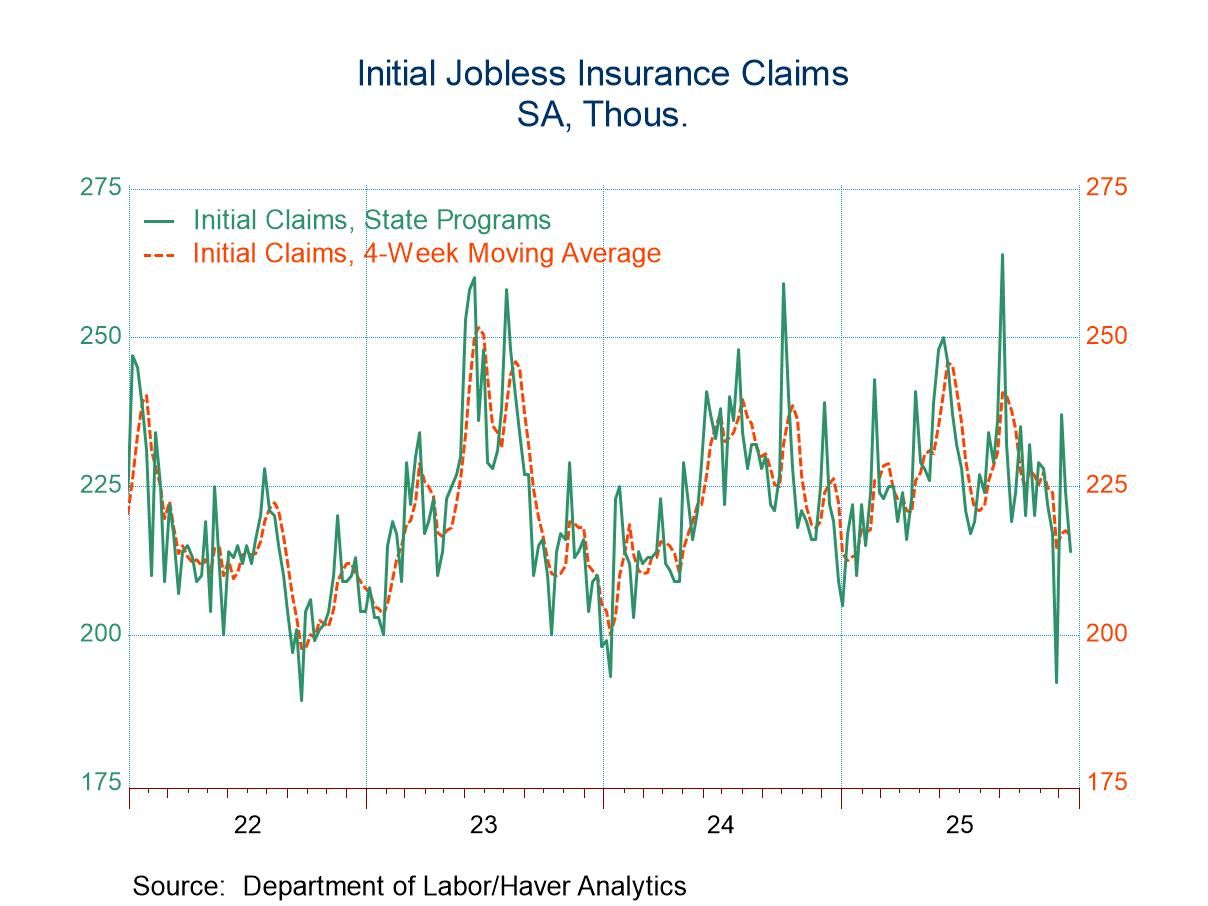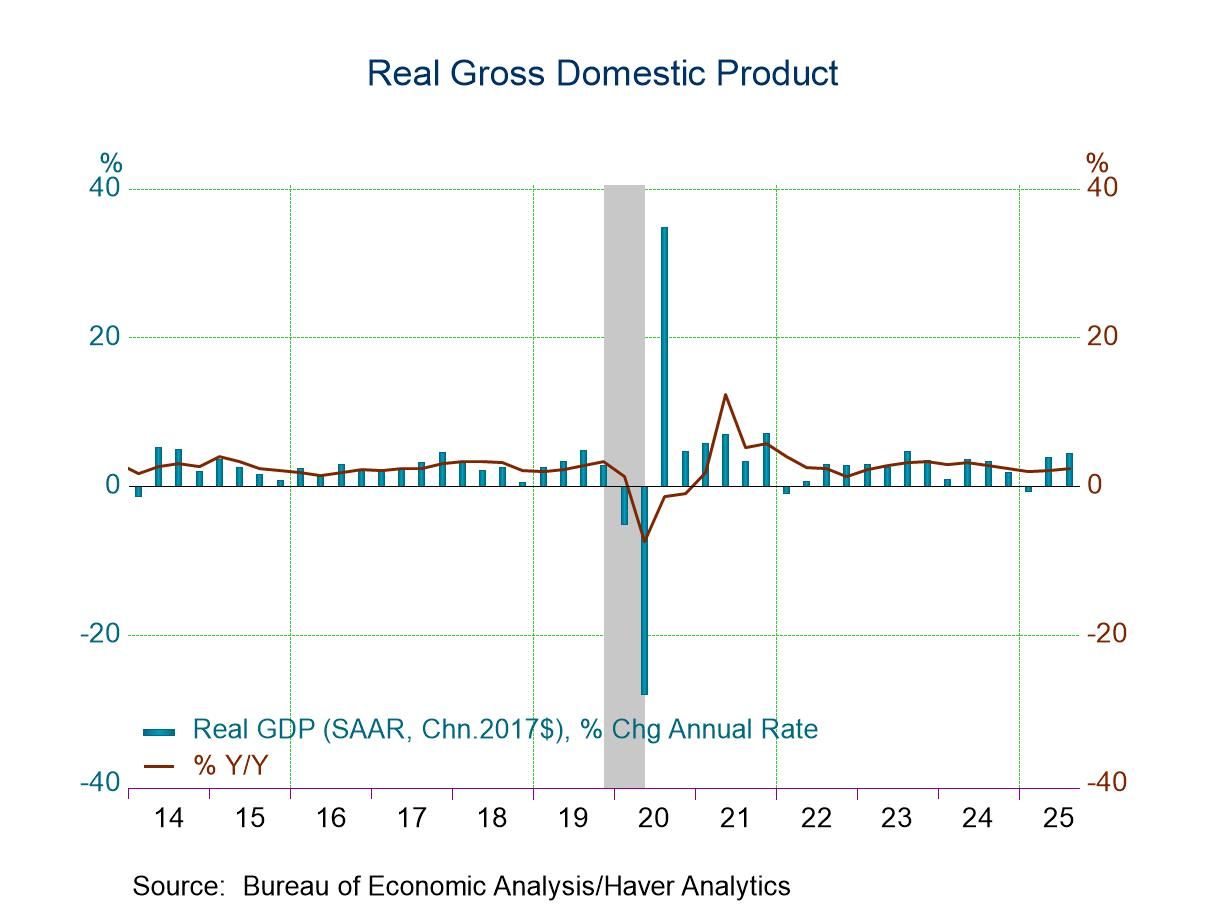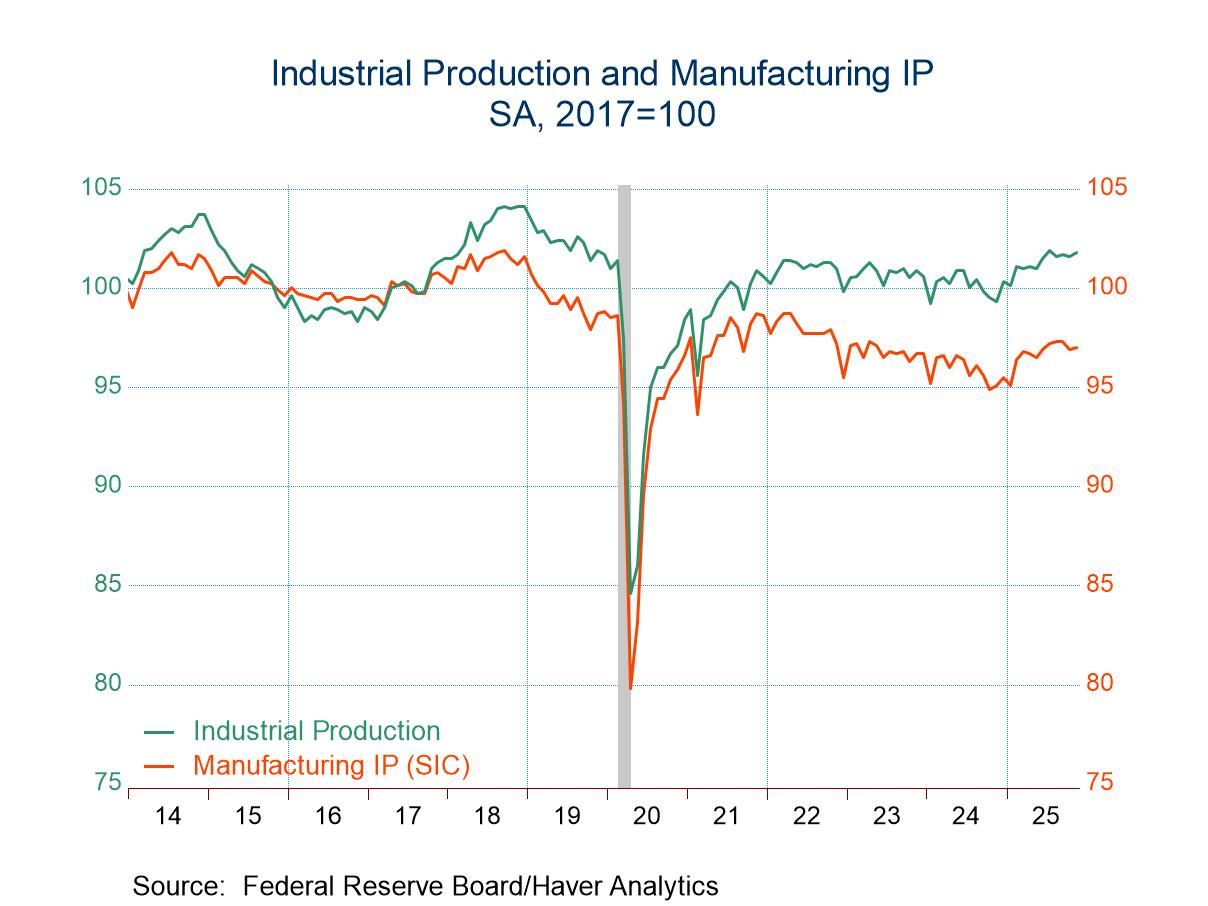U.S. Payroll Employment Accelerates in September and Wage Growth Firms; Jobless Rate Edges Lower
by:Tom Moeller
|in:Economy in Brief
Summary
- Surprising job strength is narrowly based.
- Earnings increase is better-than-expected; August pay growth lifted.
- Jobless rate slips to three-month low.


Nonfarm payrolls increased 254,000 (1.5% y/y) in September after rising 159,000 in August, revised from 142,000, and 144,000 in July, revised from 89,000. Expectations had been for a 150,000 rise in the Action Economics Forecast Survey. The three-month average change of 186,000 is the strongest since May.
Average hourly earnings increased 0.4% last month following a gain of 0.5% in August, revised from 0.4%. The y/y earnings gain edged up to 4.0% from 3.9% in August and 3.6% in July, but remained below the 5.9% high in March 2022. A 0.3% September increase had been expected.
The unemployment rate, measured in the household survey, edged down to 4.1% in September from 4.2% in August. It reached a low of 3.4% in April of last year. An unchanged 4.2% had been expected. Household employment rose 430,000 after increasing 168,000 in July. The labor force increased 150,000 after a 120,000 July gain. The overall unemployment rate, including workers who were marginally attached & working part-time for economic reasons declined to 7.7% from 7.9%.
In the payroll survey, private-sector employment increased 223,000 (1.4% y/y) in September after rising 114,000 in August. Construction sector employment increased 25,000 (2.8% y/y) last month after rising 31,000 in August. Factory sector payrolls eased 7,000 (-0.2% y/y) after falling 27,000. Mining & logging sector jobs rose 3,000 (-0.6% y/y) during September after rising 1,000 in each of the prior two months.
Private service-producing employment strengthened 202,000 in September (1.5% y/y) after a 109,000 August rise. Increases varied greatly amongst service sector categories. Private education & health service jobs rose 81,000 (3.8% y/y) after rising 60,000 in August while leisure & hospitality employment rose 78,000 (2.0% y/y) after a 53,000 gain. Professional & business service jobs rose 17,000 (0.4% y/y) after easing 4,000 in both August and July. Within that category, the number of temporary jobs fell 13,800 (-6.0% y/y) and have fallen consistently since a March 2022 high. Trade, transportation & utilities employment gained 13,000 (0.6% y/y) after falling 5,000 while financial activities jobs rose 5,000 in September (0.4% y/y) after improving 10,000 in August. Information sector employment increased 4,000 in last month (-0.2% y/y) after falling 7,000 in August.
Government sector payrolls improved 31,000 in September (2.1% y/y) after increasing 45,000 in August. Local government jobs improved 16,000 (2.0% y/y) after rising 33,000 in August while state government employment rose 13,000 (2.5% y/y) after an 11,000 gain. The number of federal government jobs increased 2,000 (1.7% y/y) following a 1,000 rise.
The 0.4% September rise in private-sector average hourly earnings reflected a 0.5% gain (4.9% y/y) in the goods-producing sector which followed a 0.4% improvement in August. Earnings in construction improved 0.4% (4.6% y/y) while factory sector earnings rose 0.5% (5.1% y/y), following a 0.4% gain. In the private services-sector, earnings rose 0.3% last month (3.7% y/y) after a 0.5% gain. Professional & business service sector earnings strengthened 0.8% (5.0% y/y) after a 0.6% rise. Leisure & hospitality earnings improved 0.2% (4.3% y/y) after rising 0.3%. Financial sector earnings increased 0.2% (4.2% y/y) after a 0.5% gain. Private education & health services earnings improved 0.3% (3.1% y/y) for the fourth straight month. Trade, transportation and utilities pay edged 0.1% higher (2.8% y/y) in September after a 0.4% rise. Information sector earnings declined 0.4% (+3.6% y/y) after strengthening 1.1% in July.


The length of the average workweek in the private sector eased to 34.2 hours in September after rising in August to 34.3 hours. The workweek in the goods-producing sector of 39.9 hours compared to 39.8 hours in August. The construction sector average workweek lengthened to 39.2 hours from 39.0. The factory sector workweek held steady at 40.0 hours while the average workweek in the private service sector slipped to 33.1 hours. The aggregate weekly hours index in the private sector, a key indicator of production and income, slipped 0.1% in September (+0.9% y/y) after rising 0.3%. The Q3 average increased 0.2% (AR) from Q2’24.
In the household survey, the jobless rate fell to 4.1% as employment rose 0.3% and the size of the labor force edged 0.1% higher. The labor force participation rate was 62.7% for the third straight month. The rate for teenagers rebounded to 37.2%, while for individuals aged 20-24, it was little-change at 70.6%. For rate for workers aged 25-54, the rate fell to 83.8% but for workers 55 and over, it held steady at 38.6 hours.
The employment/population ratio for all workers rose to 60.2% in September and has been moving sideways since early last year. It remained below its high of 61.1% in February 2020, just prior to the pandemic.
The employment and earnings data are collected from surveys taken each month during the week containing the 12th day of the month. The labor market data are contained in Haver's USECON database. Detailed figures are in the EMPL and LABOR databases. The expectations figures are in the AS1REPNA database.


Tom Moeller
AuthorMore in Author Profile »Prior to joining Haver Analytics in 2000, Mr. Moeller worked as the Economist at Chancellor Capital Management from 1985 to 1999. There, he developed comprehensive economic forecasts and interpreted economic data for equity and fixed income portfolio managers. Also at Chancellor, Mr. Moeller worked as an equity analyst and was responsible for researching and rating companies in the economically sensitive automobile and housing industries for investment in Chancellor’s equity portfolio. Prior to joining Chancellor, Mr. Moeller was an Economist at Citibank from 1979 to 1984. He also analyzed pricing behavior in the metals industry for the Council on Wage and Price Stability in Washington, D.C. In 1999, Mr. Moeller received the award for most accurate forecast from the Forecasters' Club of New York. From 1990 to 1992 he was President of the New York Association for Business Economists. Mr. Moeller earned an M.B.A. in Finance from Fordham University, where he graduated in 1987. He holds a Bachelor of Arts in Economics from George Washington University.






